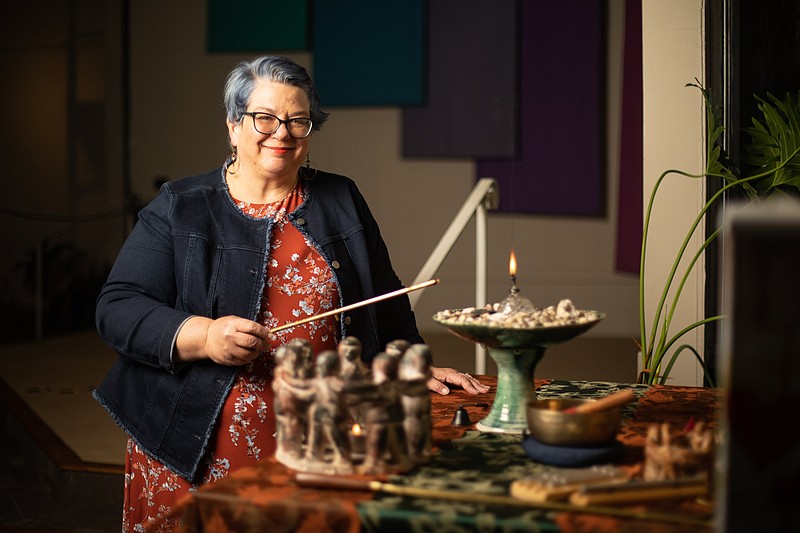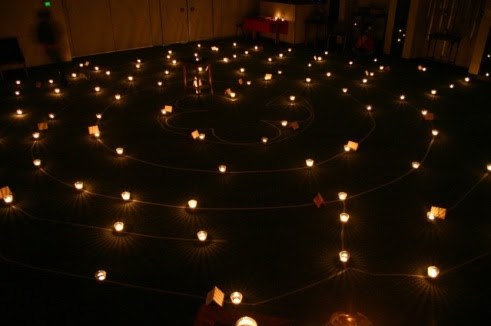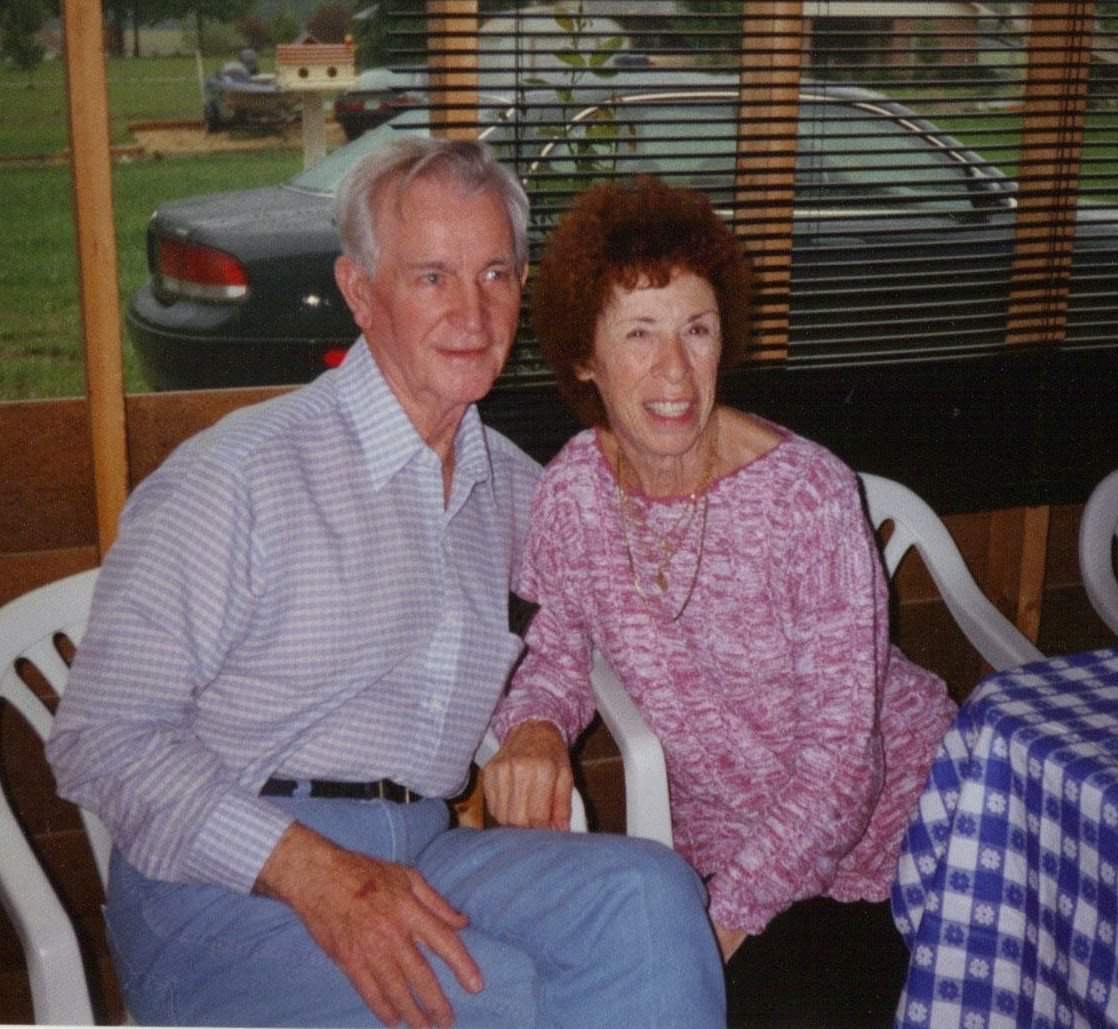Season's greetings. Blessed Yule. Happy Hanukkah. Merry Christmas.
The winter holidays are highly individual and look different for everyone - much like our communities. Whether it's lighting a menorah and eating latkes, meditating while walking a labyrinth or participating in a raucous year-end lip-syncing contest, we each celebrate in personal and interesting ways. But as varied as our traditions may be, the holidays bring with them a sense of togetherness and inclusivity that is the hallmark of each year.
Here, Chattanoogans share their unique reasons for the seasons.
Chattanoogan Neda Alford Long was raised in the Bahá'í (pronounced bah-hi) faith, a religion of Persian origins. Those in the Bahá'í faith do not observe Christmas, but Long remembers as a child "look[ing] forward to the celebration at the end of winter the time we call Ayyám-í-Há [pronounced ay-yahm-ee-hah], or 'the Days of Joy.'" This is a time set aside for gift-giving, charity and celebration for those in the Bahá'í faith, and typically begins around the later part of February and ends in early March.
"My family has always celebrated with daily gifts brought by what we call the 'Ayyám-í-Há camel,'" she says. The idea of the camel came from a children's book of the same name. In the story, the camel is made up by a family to teach their children about the gift-giving nature of this Bahá'í holiday, and to help them not feel left out amongst their peers celebrating holidays in December.
"Bahá'ís around the world have different ways of celebrating, so maybe there are others that were inspired by the book," Long explains, "but for the most part we each find our own ways to express the spirit of the occasion to share joy, gratitude and goodwill." Now that she is raising her children in the faith, Long is happy that in recent years, the Bahá'í Faith Center in Hixson hosts "a big party each year to invite all our friends to share in our celebration, with a bouncy house, petting zoo, cotton candy and gift exchanges," Long says.
What is the Baha’i faith?
The Baha’i Faith believes in the unity of all people over time through the world’s various religions. In the faith, God reveals understanding to people at various times through prophets from other religions, such as the Buddha, Muhammad and Jesus. The religion was founded in Iran by Bahá’u’lláh in the mid-19th century and is followed by around 7 million people today.Baha’is have been in the Chattanooga area since the 1940s, said Andrew Lefton, secretary for the Spiritual Assembly of the Baha’is of Chattanooga. The local assembly incorporated in 1975 and has around 100 members from Hamilton, Bradley and Marion counties, he said.
In the same vein of having different ways of celebrating, Unitarian Universalist Reverend Mandy Goheen has several favorite memories and traditions during this time of year.
Because Unitarian Universalism is a multi-religious faith that embraces a personal, individual search for truth and meaning, the church holds and honors multiple festivities throughout the holiday season. These include a labyrinth to mark the solstice, Christmas festivities like a cookie exchange and a child-led Christmas pageant, and a New Years Pagan fire communion. The labryinth is used as a walking meditation, and it's one of Goheen's favorite traditions. This is partly because of the tape ball fight that happens after the labyrinth, constructed by tape, is taken down each season. The church's youth group and religious education committee typically are in charge of putting up and taking down the labyrinth, and every year, as they take it down, "there's tape all over the floor, and so there's this tape ball fight at the endit's a very important part of the process," she explains, with a bit of humor in her tone.
Ultimately, for Goheen, though, the joy in the holiday season is being able to not just be a minister to her congregation, but also a part of her church's community, and see the youth in her church take over and lead. That's why another one of her favorite traditions is the child-led Christmas pageant.
Meanwhile, executive director of the Jewish Federation Council, Michael Dzik, remembers family celebrations that would always seem to get a little out of hand. From brothers to aunts to cousins, Hanukkah celebrations were always jam-packed with family and friends. Dzik's family would always turn the lights down to light the menorah, and "[his] step-father," he says, "was really into multiple menorahs - he wanted to make sure that all of the children and step-children had their own menorahs to lightit was a fire hazard, but it was fun."
Over the last 20 years of working for the Jewish community, Dzik says that one of his favorite things to see during the Hanukkah celebrations for the Federation Council is seeing the community come together to celebrate and bringing their own menorahs. From Legos to metal and wood, menorahs are made out of a plethora of different materials, and that's one of the things that Dzik enjoys the most: seeing the different types of menorahs that people bring to light.
Dzik's friend, Rob Lowe, has two traditions that he holds dear. First, Lowe says, is the annual Chanukah on Ice event put on by the Chabad Jewish Center of Chattanooga at Ice on the Landing, where festivities include the display and lighting of a 5-foot menorah made out of ice. Prior to the candlelighting ceremony, a parade happens where the ice menorah is taken through the streets of downtown, flanked by cars decked out with menorahs. And second, he says, is a personal family tradition, where his family has taken the tradition of ugly Christmas sweaters and turned it into ugly Hanukkah sweaters. "We'll wear them to different Hanukkah parties that we go to," Lowe says. "There's usually a community Hanukkah party at the [Jewish Cultural Center]."
Ultimately, though, what brings us together for the holidays- community, faith, family - is far more important than our differing beliefs.
Of course, even if we do celebrate with what's oftentimes seen as the "traditional" Christmas festivities, people still find ways to put their own spin on things. For Kye Sayers, that's exactly what the season's about.
Sayers is the co-founder, operations manager and creative director of Sanctuary Performing Arts and Cafe, a local safe space for LGBTQIA Chattanoogans and allies. Leaning in to the foundational aspects of queer culture that involve taking care of your chosen family, Sanctuary provides a variety of needs for the Chattanooga community at large throughout the year, everything from events to support groups and venue space.
Sayers makes sure to do this not just on a community level but also on a personal level. One of her favorite memories is the big holiday party that she throws at her house for friends. One year, she hosted a lip-syncing battle in which party-goers dressed up in drag and competed against one another to put on the best, most energetic performance.
As she recalls, "my staircase banister ended up being completely broken, [and] my living room torn upside down."
Much like Sanctuary has become a safe space for the community, Sayers's home has become a place for her friends and community to let loose and fully express themselves. And the next day's cleanup is a small price to pay for the memories, a bright light to carry into the new year, helping illuminate Chattanooga's colorful communities and the many ways there are to celebrate.
The flavor of family tradition
For Chattanoogan Tanner Blair the holidays are marked by the smell of lasagna baking in the oven.
"My grandmother was born in Italy, but she moved [to the United States], with my great-grandmother, when she was very young, maybe five or so," he explains. "[Baking lasagna for the holidays] was how they embraced their heritage, coming over to the United States. My great-grandmother started the tradition."
When asked if the tradition helps him to feel closer to his great-grandmother, though, he gives an honest answer and shrugs and says, at some point, "[the tradition] detached itself from heritage. Now it's more local. It's something my parents have done literally my whole life, so now I associate it more with my parents than I do with my grandparents and my great-grandparents."


